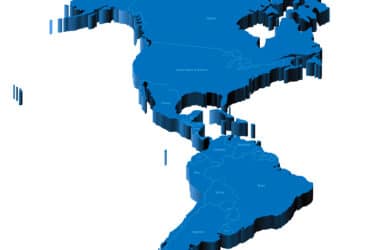A confluence of new demand is driving a dramatic expansion of subsea telecom cables, a primary means of routing electronic trades between faraway market centers. The increase in activity is the most since the Internet boom of the late 1990s, some observers say.
The subsea-cable market likely will reach a 7% compounded growth rate by 2020, concluded a study published by QYResearch Group earlier this year.
What the markets have seen so far is just the tip of the iceberg, according to Pukka-Pekka Joensuu, executive vice president of the Cinia Group and who participated in a webinar produced by Jaymie Scotto & Associates. “What we are seeing is this growth heading towards the next industrial revolution, he said. “It’s a wonderful opportunity for many players to start new global activities.”
Although wholesale telecoms still represent 85% of the subsea-cable market, Eric Gutshall, founder and global head of asset & capacity sales for United Cable Company and fellow panelist, has seen new types of customer, including high-frequency traders and some Wall Street-type firms, stepping up to purchase subsea bandwidth.
“Joensuu’s new cable is perfect for high-frequency trading in that it shaves off two milliseconds from Helsinki to Frankfurt,” he said.
Joensuu also saw the demands by financial services not only fueling the growth of bandwidth but new routes as well.
Fellow panelists were careful to avoid irrational exuberance and the overprovisioning that occurred after the Internet bubble burst in 2001. “I think the markets can more than support all the new assets,” said David Ross, owner and CEO of industry research firm The David Ross Group. “One of the evidence of it is that a large fraction of the of the new systems is pre-sold before construction begins. It indicates that the need is urgent and not something that is being built on speculation.”
New sources of project financing are also adding to subsea-cable growth, he added. “Private equity is much more active than has been true in the recent past. There is some stimulus by governments, multilateral institutions to provide new connectivity.”
Even with increases in demand and potential funding, Tom McMahon, CTO of subsea-cable operator Aqua Comms, was wary in predicting tremendous growth.
“It’s true that there is a very large gap between a line on a map and a line in the bottom of the sea,” he noted. “If anything, permits, authorizations, licenses and the cost of those licenses are getting more difficult as time goes on. Trying to find a niche and unique aspects to your system to put it at the forefront is a tricky business.”
More on Market Connectivity:





